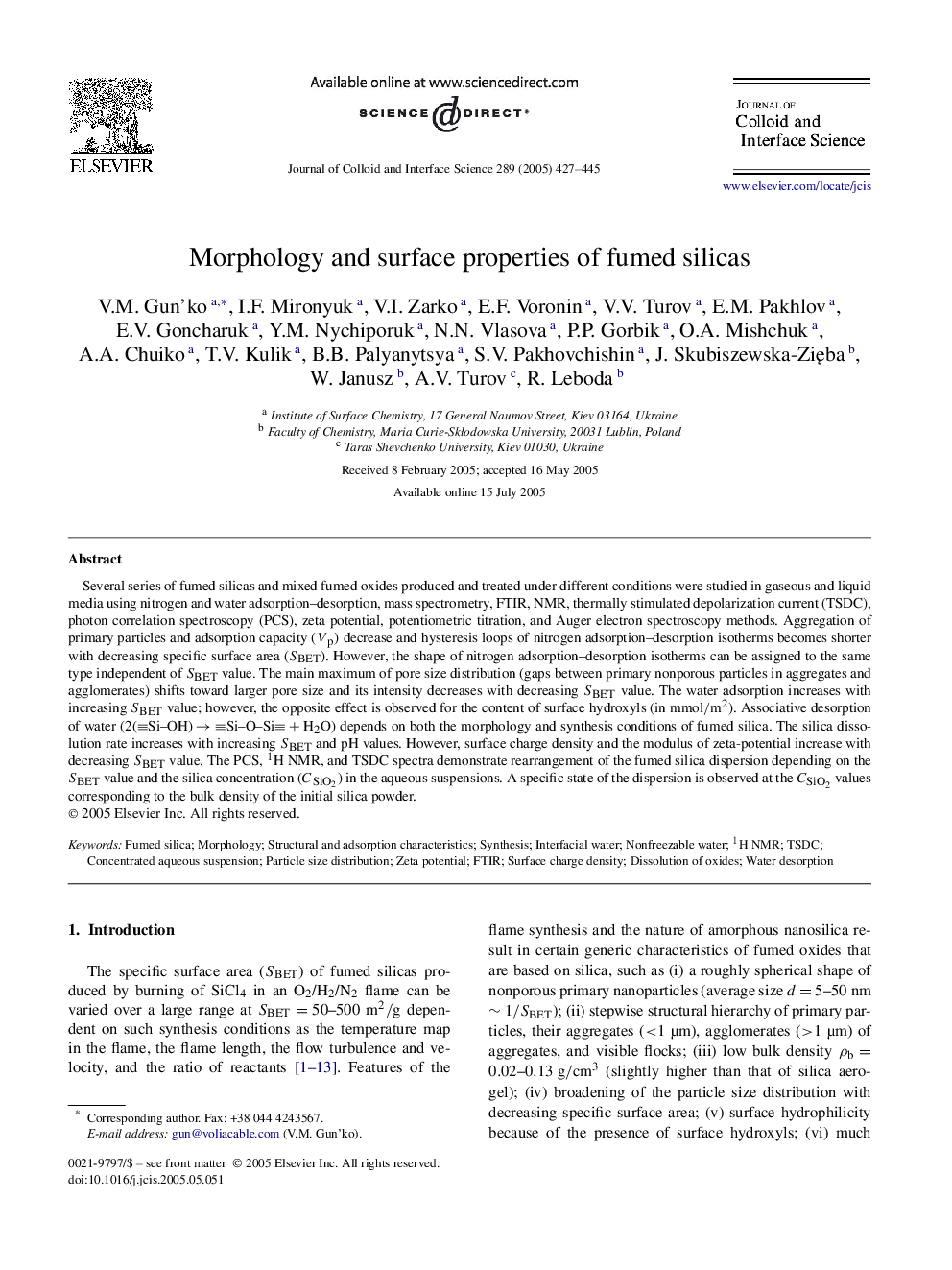| Article ID | Journal | Published Year | Pages | File Type |
|---|---|---|---|---|
| 10377820 | Journal of Colloid and Interface Science | 2005 | 19 Pages |
Abstract
Several series of fumed silicas and mixed fumed oxides produced and treated under different conditions were studied in gaseous and liquid media using nitrogen and water adsorption-desorption, mass spectrometry, FTIR, NMR, thermally stimulated depolarization current (TSDC), photon correlation spectroscopy (PCS), zeta potential, potentiometric titration, and Auger electron spectroscopy methods. Aggregation of primary particles and adsorption capacity (Vp) decrease and hysteresis loops of nitrogen adsorption-desorption isotherms becomes shorter with decreasing specific surface area (SBET). However, the shape of nitrogen adsorption-desorption isotherms can be assigned to the same type independent of SBET value. The main maximum of pore size distribution (gaps between primary nonporous particles in aggregates and agglomerates) shifts toward larger pore size and its intensity decreases with decreasing SBET value. The water adsorption increases with increasing SBET value; however, the opposite effect is observed for the content of surface hydroxyls (in mmol/m2). Associative desorption of water (2(SiOH) â SiOSi + H2O) depends on both the morphology and synthesis conditions of fumed silica. The silica dissolution rate increases with increasing SBET and pH values. However, surface charge density and the modulus of zeta-potential increase with decreasing SBET value. The PCS, 1H NMR, and TSDC spectra demonstrate rearrangement of the fumed silica dispersion depending on the SBET value and the silica concentration (CSiO2) in the aqueous suspensions. A specific state of the dispersion is observed at the CSiO2 values corresponding to the bulk density of the initial silica powder.
Keywords
Related Topics
Physical Sciences and Engineering
Chemical Engineering
Colloid and Surface Chemistry
Authors
V.M. Gun'ko, I.F. Mironyuk, V.I. Zarko, E.F. Voronin, V.V. Turov, E.M. Pakhlov, E.V. Goncharuk, Y.M. Nychiporuk, N.N. Vlasova, P.P. Gorbik, O.A. Mishchuk, A.A. Chuiko, T.V. Kulik, B.B. Palyanytsya, S.V. Pakhovchishin, J. Skubiszewska-ZiÄba, W. Janusz,
